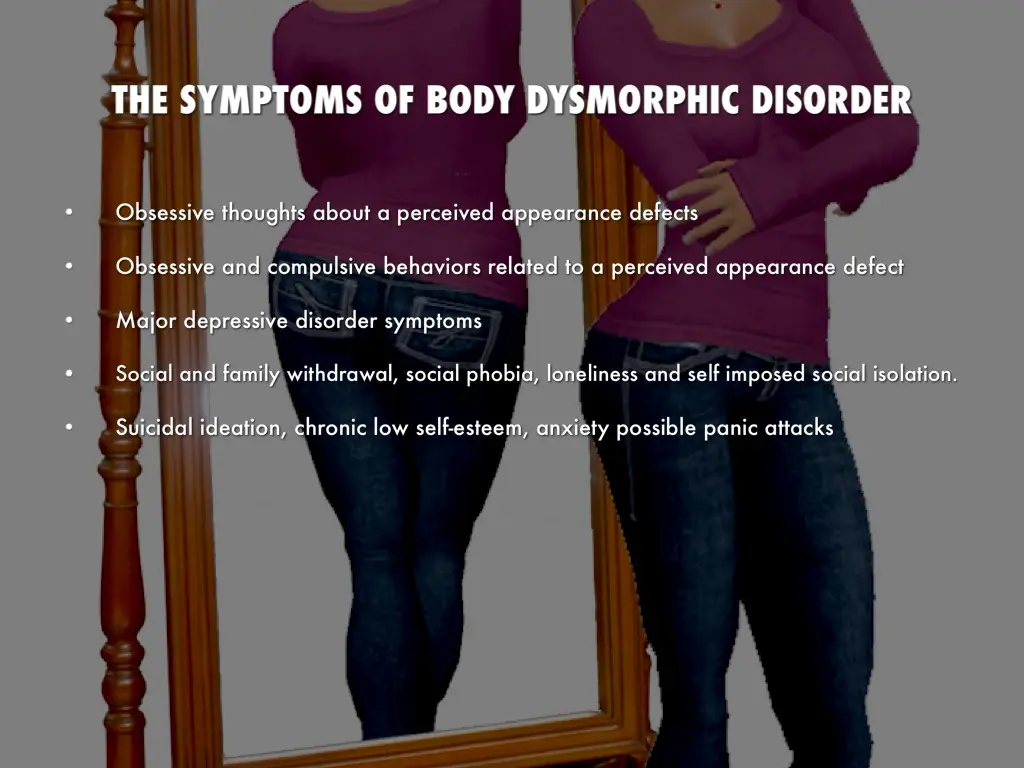Can Body Dysmorphic Disorder be Cured?
Sometimes
No cure; treatment aims to manage symptoms, improve quality of life, and address underlying psychological factors; outcomes vary, and ongoing therapy may be necessary

What is Body Dysmorphic Disorder?
Body dysmorphic disorder (BDD) is a mental health condition where individuals have a preoccupation with perceived flaws or defects in their appearance, often leading to significant distress and impaired daily functioning. Treatment may involve therapy and medication.

Clinical Aspects

Characteristics
Mental health disorder characterized by obsessive focus on perceived flaws or defects in physical appearance

Symptoms
Preoccupation with perceived flaws or defects, repetitive behaviors (e.g., checking appearance)

Diagnosis
Clinical evaluation, psychiatric assessment

Prognosis
Variable, manageable with sustained therapeutic engagement

Complications
Impaired interpersonal relationships, risk of self-harm
Etiology and Treatment

Causes
Genetic, neurobiological, and environmental factors; history of trauma

Treatments
Psychotherapy, medication (e.g., antidepressants), cognitive-behavioral therapy

Prevention
Psychotherapy, medication (e.g., antidepressants), cognitive-behavioral therapy
Public Health and Patient Perspectives

Epidemiology
Common, onset often in adolescence

Patient Perspectives
Comprehensive therapeutic support facilitates adaptive coping strategies
Please remember that this information is provided for general understanding, and individual cases may vary. Always consult with healthcare professionals for personalized advice and information.
Share: